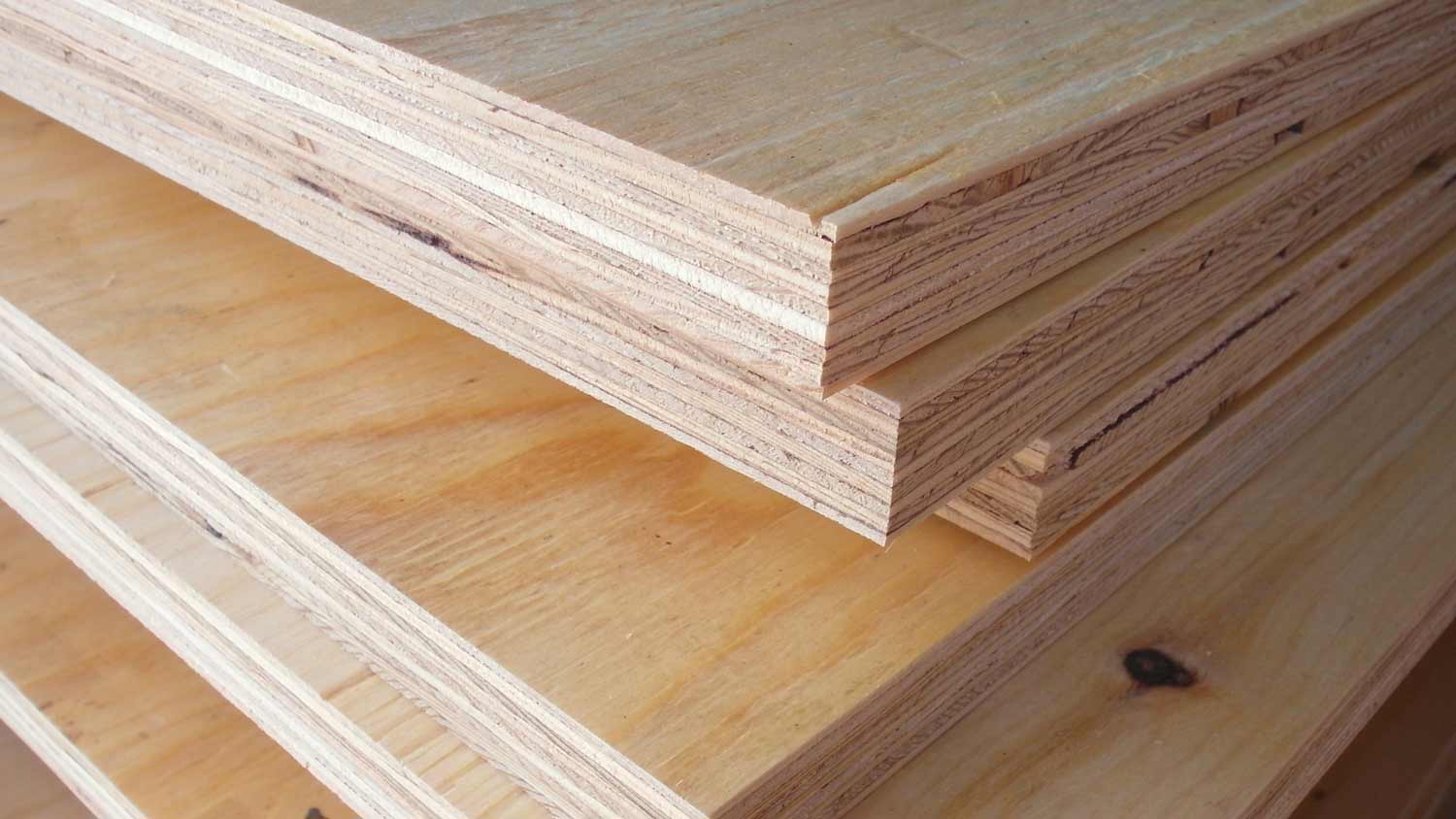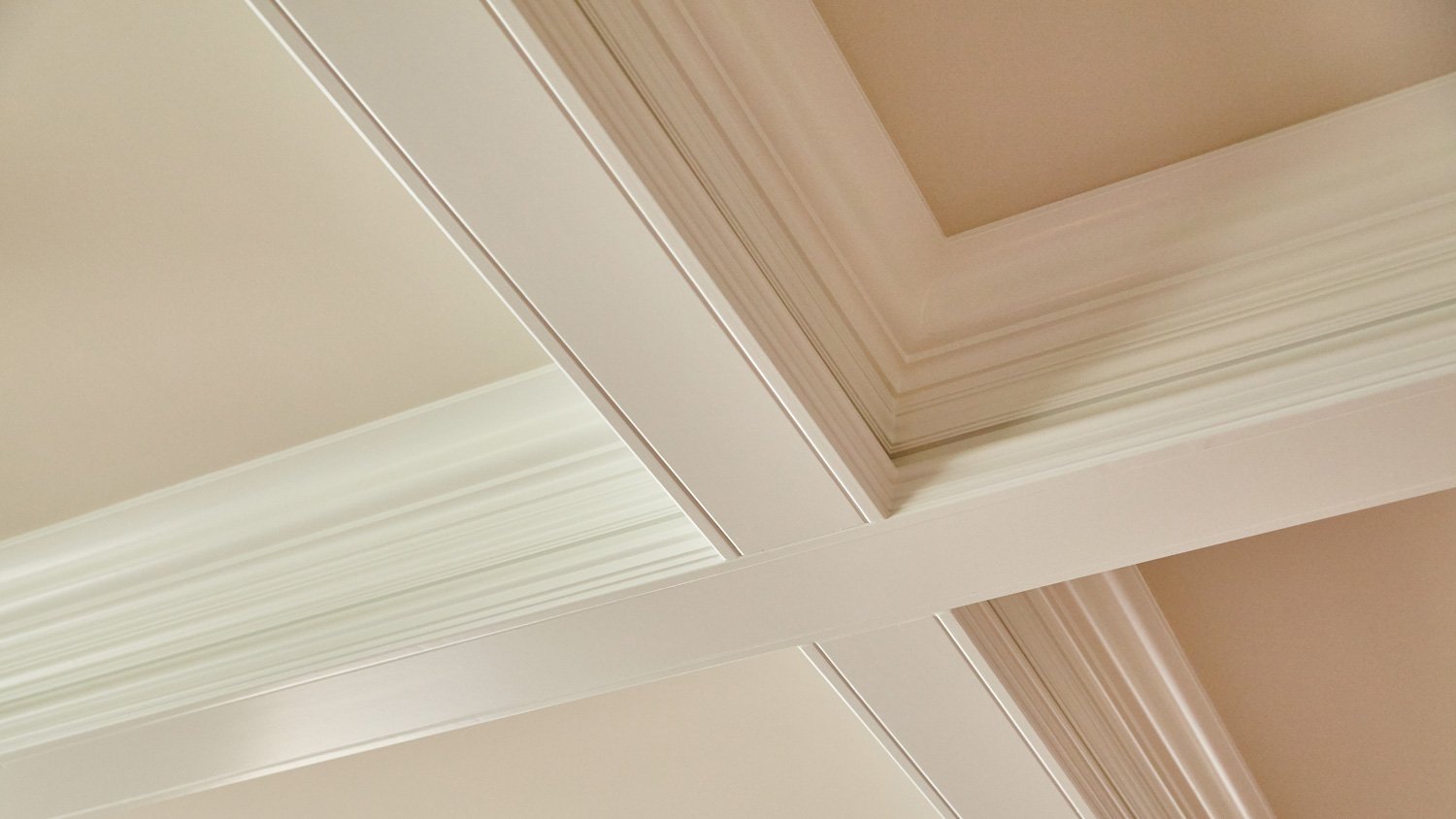
Discover storm damage repair costs, key price factors, and ways to save. Get transparent estimates to plan your home repairs with confidence.
Nail your home improvement project by ensuring you have the right amount of plywood


The amount of plywood you need depends on the size of the plywood sheets.
You might need as few as eight sheets to as many as 62 sheets.
A carpenter can recommend the proper number of plywood sheets you need.
Plywood is a versatile material commonly used in flooring, framing, and roofing projects. If you’re wondering how much plywood you need, this handy plywood calculator will help you estimate your material needs, allowing you to purchase the correct amount for your project.
The most common plywood projects are flooring, walls, ceilings, and roofing, and it can also be used to board up windows to protect your home from storm damage. Here’s a quick glance at the number of plywood sheets you’d need for each project.
| Project | Approximate Square Footage | Number of 4x8 Plywood Sheets Needed | Number of 5x5 Plywood Sheets Needed |
|---|---|---|---|
| Flooring | 216 | 8 | 10 |
| Walls | 352 | 13 | 17 |
| Ceiling | 216 | 8 | 10 |
| Roofing | 1,700 | 62 | 79 |
Determining the correct amount of plywood you need for your project helps prevent over- or under-buying. Use the following formula to determine your plywood needs.
Number of Plywood Sheets Needed = [Total Surface Area / Plywood Sheet Area] x 1.15
Dividing the total surface area by the plywood surface area gives you the approximate number of plywood sheets you’ll need. Then, multiply it by 1.15 to account for 15% overage (which helps if you make a mistake or underestimate your plywood needs).
For example, a 4x8 sheet of plywood has a surface area of 32 square feet, while a 5x5 sheet of plywood has a surface area of 25 square feet. From there, you can determine your budget. Note that plywood subflooring costs between $600 and $700.

Now that you know the formula you need to use to calculate the amount of plywood you’ll need for your project, you must first determine the size of the area where the plywood will be installed. Here’s how to do that.
If you’re replacing subflooring with new plywood, you’ll need to know the surface area of the floor.
Measure the floor or ceiling’s width from wall to wall.
Repeat for the opposite width.
Multiply the two widths together to get the total surface area.
For an irregular-shaped room, divide it into sections and measure each, then add the sections together.
Divide the total square footage by the square footage of the plywood sheet, then add 15% to account for overage.
For example, if your room measures 12 feet by 10 feet, the total area is 120 square feet. If the room has a small 4-foot-square alcove, you’d add the area of that space (16 square feet) to the main room’s area for 136 square feet total. You’d need around five 4x8 plywood sheets for the floor or ceiling in this room.
Measuring walls for plywood is similar to measuring floors. Here’s how to do it:
Measure the height and width of each wall in the room.
For each wall, multiply the width by the height.
Add the areas together for all the walls in the room.
Divide the total square footage by the square footage of the plywood sheet, then add 15% to account for overage.
For example, if your room has two 10x8 walls and two 10x12 walls, you’d have a total of 400 square feet. You’d need around 15 4x8 plywood sheets for the walls in this room.
Plywood provides a stable base for roofing shingles. Here’s how to measure your roof for plywood:
Measure and multiply the length and width of each roof section.
Add the area of all roof sections together.
Subtract any obstructions, like chimneys or skylights, from your total roof area.
Divide the total square footage by the square footage of the plywood sheet, then add 15% to account for overage.
For example, if your roof measures 1,700 square feet in total, you’d need around 62 4x8 plywood sheets to cover it. Measuring the area of a roof can be hazardous, so hire a professional roofer to do it for you.
Who you hire to install plywood depends on the type of project you’re undertaking. A flooring specialist can be hired to replace the subfloor in your home. For roofing projects, a professional roofer can measure and install plywood with the proper roof sheathing size.
In most cases, a professional carpenter can handle just about any plywood project, from subfloor installation to cabinetry or framing a room. The hourly cost to hire a carpenter ranges from $75 to $130, depending on the carpenter's experience level and the labor costs in your area.
5 Star’s employees are very professional I usually hire them for rehab houses They do painting, carpentry, tile, etc. I recommend them very highly
We thought the estimator had a good understanding of what we wanted, but after the job was started we were told there would be additional charges. That seemed a little excessive, but we had no choice at that point. We did deduct the 15% Angie's List discount and that was questioned. All...
I can't say enough good things about Homelink. I had an unusual situation where I needed to remodel one upstairs bathroom and partially remodel another downstairs bathroom . Water was leaking from the upper bath into the ceiling of the lower bath. Jenny Barber assessed the situation and...
At first things went fairly well, but there were some signs of trouble early on that I just overlooked as part of the home building process, such as not answering the phone, returning calls, and not showing up to appointments. Things moved along fairly well in the beginning, a few hiccups...
Seth is very responsive, punctual, honest and reliable. He says what he does, and does what he says. He keeps a close eye on all work being performed so you don't have to worry. The siding job is excellent and the carpentry work completed was first rate. Pricing was also excellent based...
From average costs to expert advice, get all the answers you need to get your job done.

Discover storm damage repair costs, key price factors, and ways to save. Get transparent estimates to plan your home repairs with confidence.

The cost to frame a house can vary depending on the size of your home, the structure you’re building, and your materials. Keep reading to learn how much framing your house might cost.

Winterizing a house depends on its type, size, location, and more. Our guide breaks down how much it costs to winterize a home.

Not sure what the difference is between coffered and tray ceilings? Learn the key distinctions in design, cost, and benefits to decide which ceiling style is best for your home.

Bonded vs. insured contractors: Learn the difference and which to hire for your home improvement project. Protect yourself and your home by hiring smart.

Here's how much households are paying for utilities around the country. While location determines provider rates, your home's size and efficiency level can dramatically impact utility usage.